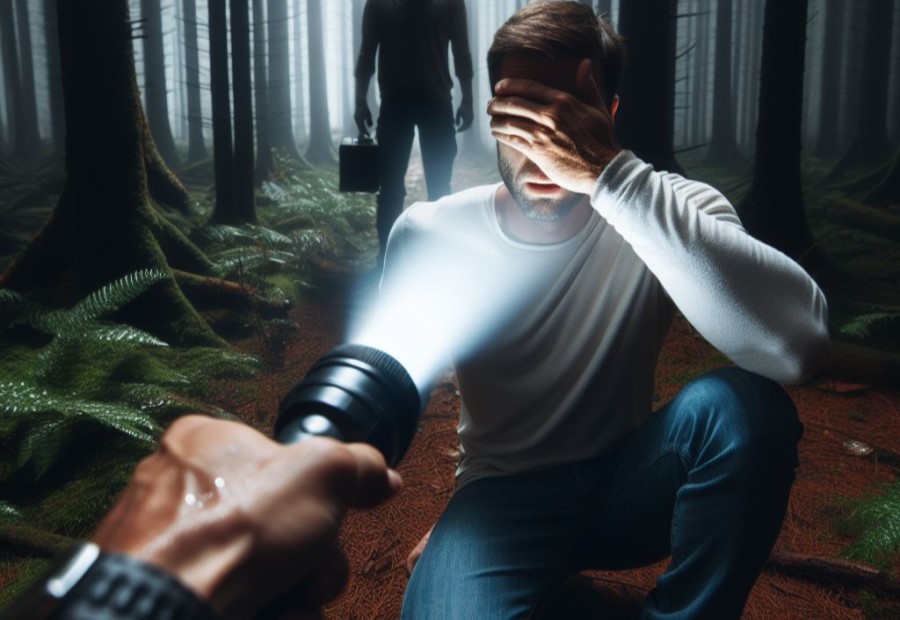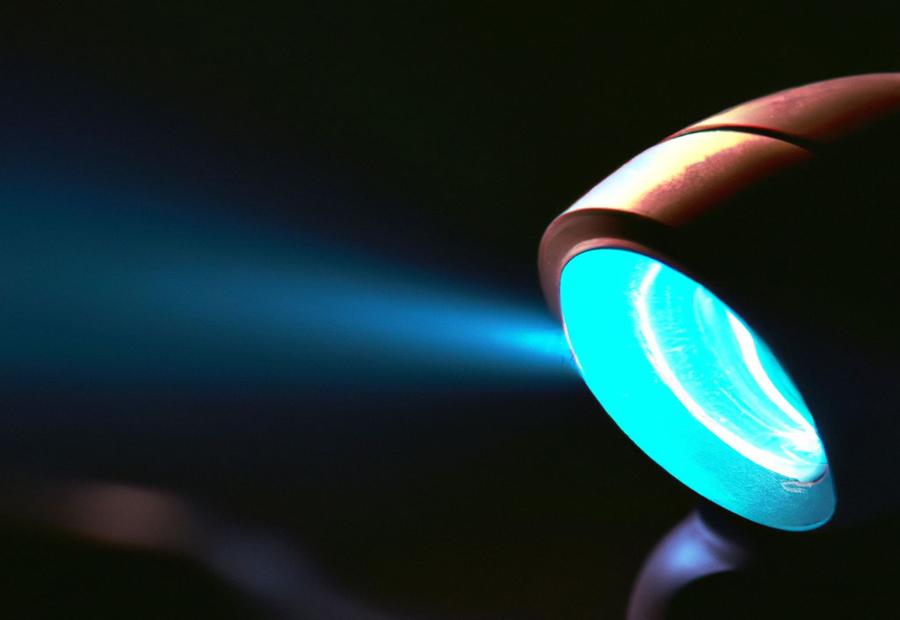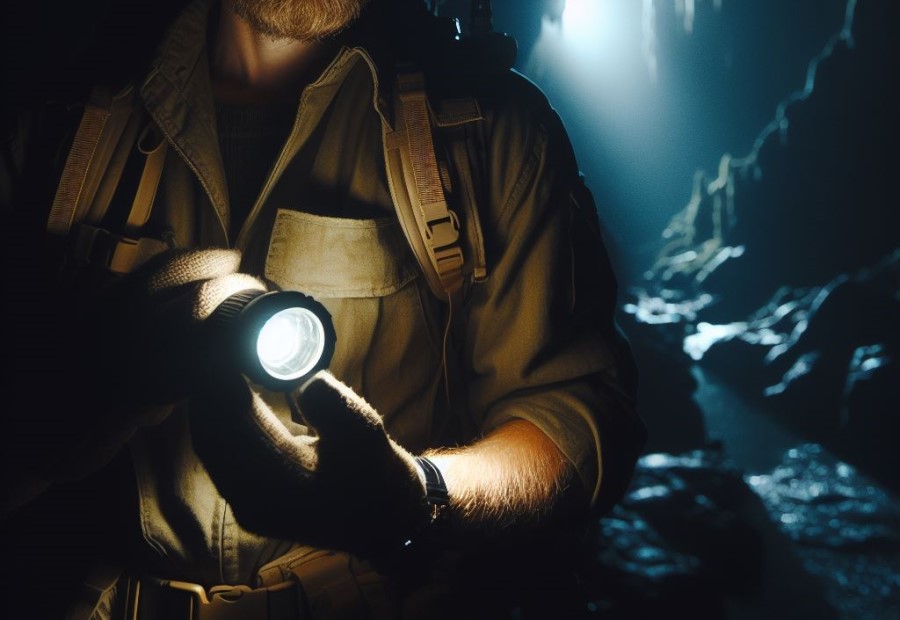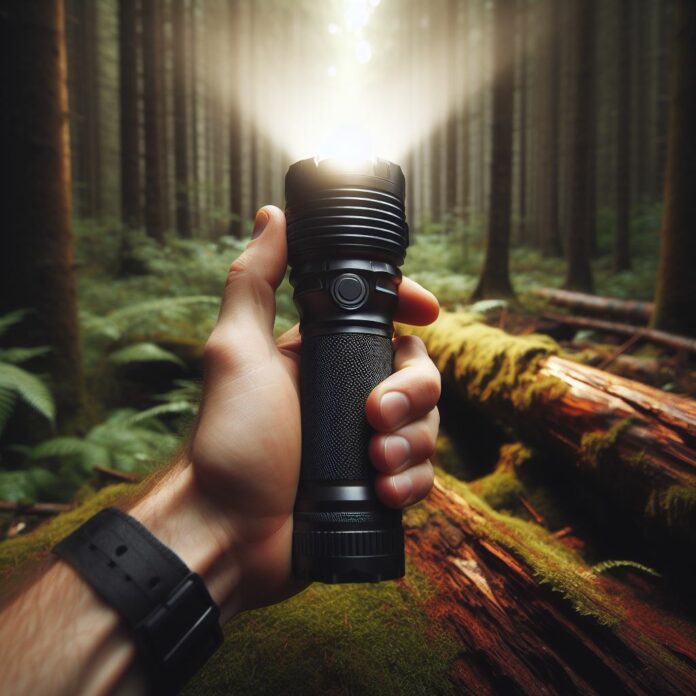Tactical flashlights are commonly used for various purposes, including self-defense, emergency situations, and outdoor activities. While these flashlights offer numerous benefits, there is a concern about their potential to blind individuals.
In this article, we will explore the functionalities of tactical flashlights, their differences from regular flashlights, and whether they have the ability to blind people.
To begin with, let’s understand what exactly a tactical flashlight is and how it differs from a regular flashlight. Tactical flashlights are designed to be durable, reliable, and versatile. They are typically more compact, brighter, and have additional features such as strobe modes or rechargeable batteries.
These flashlights are specifically engineered for tactical and professional use, making them suitable for law enforcement, military personnel, and outdoor enthusiasts.
The production of light in tactical flashlights is quite different from regular flashlights. They utilize advanced LED (Light Emitting Diode) technology to generate a high-intensity beam. This results in a beam that is significantly brighter and has a longer throw distance than traditional flashlights.
Now, let’s address the question of whether tactical flashlights can blind individuals. The answer to this is both yes and no. The intense light produced by tactical flashlights can cause temporary blindness if shone directly into someone’s eyes.
This effect is due to the high luminosity and focused beam, which overwhelms the photoreceptor cells in the retina. However, it is important to note that blinding someone intentionally and without justification is illegal and unethical.
Understanding the intensity of tactical flashlights is crucial in assessing their potential risks. These flashlights are capable of producing several thousand lumens, which can cause disorientation, glare, and impair night vision. Exposing someone to a tactical flashlight’s beam for an extended period or from close proximity can increase the risk of eye damage.
What is a Tactical Flashlight?

A tactical flashlight is a powerful and versatile handheld light that is specifically designed for military, law enforcement, and outdoor use.
These flashlights are known for their durability, high brightness, and various features that enhance their functionality in challenging situations. They are typically made with strong materials such as aluminum or stainless steel to withstand impact and harsh conditions.
Tactical flashlights often have multiple light modes, including high, low, strobe, and SOS, allowing users to adapt to different scenarios. They also often feature a bezel or crenelated edge around the lens, which can be used for self-defense purposes.
These flashlights are typically powered by either standard batteries or rechargeable batteries, providing long-lasting illumination. With a high lumen output, they can produce a bright and focused beam that can reach long distances.
In 1899, the British Army developed the earliest form of a tactical flashlight, called the “Tube Torches.” These flashlights were used during the Second Boer War in South Africa, allowing soldiers to navigate in the dark and disorient the enemy. This marked the beginning of the development of tactical flashlights and their importance in military operations.
Tactical flashlights have come a long way since then, with advancements in technology leading to more compact designs, higher brightness levels, and added features. Today, these flashlights are not only used by military and law enforcement personnel but also by outdoor enthusiasts, campers, and everyday individuals looking for a reliable and powerful portable light source.
How Does a Tactical Flashlight Differ from a Regular Flashlight?
To understand how a tactical flashlight differs from a regular flashlight, consider the following:
- Design: Tactical flashlights are typically designed with a rugged and durable construction. They often feature a solid outer casing made from materials like aluminum or stainless steel.
- Brightness: Tactical flashlights are known for their high lumen output, which refers to the intensity of light they produce. They are designed to emit a powerful beam of light, often ranging from hundreds to thousands of lumens.
- Beam focus: Unlike regular flashlights that may have a fixed or adjustable beam focus, tactical flashlights often have a focus that can be adjusted to provide both floodlight and spotlight capabilities. This allows for better illumination of specific areas or objects.
- Special features: Tactical flashlights commonly include additional features like strobe mode, SOS mode, momentary-on switch, and multiple brightness settings. These features can be useful in emergency situations or when in need of signaling for help.
- Attachments: Many tactical flashlights are compatible with various accessories such as weapon mounts, filters, or diffusers. These attachments enhance the versatility and functionality of the flashlight for specific tasks or purposes.
- Durability: Tactical flashlights are designed to withstand harsh conditions, making them suitable for outdoor activities, military or law enforcement use, and self-defense. They are often water-resistant or waterproof and can withstand drops and impacts.
- Battery life: Tactical flashlights are engineered to have longer battery life to ensure reliable use in extended situations or during emergencies.
These differences distinguish a tactical flashlight from a regular flashlight, making it a preferred choice in situations where a more powerful and versatile lighting tool is required.
How Do Tactical Flashlights Produce Light?
Tactical flashlights produce light through the use of powerful LED bulbs. These bulbs emit light when an electrical current passes through them.
The LEDs in tactical flashlights are designed to be very bright, often reaching a maximum output of several hundred lumens. This high level of brightness is achieved by using specialized lenses and reflectors to focus and direct the light.
The light produced by tactical flashlights is typically a cool white color, providing optimal visibility in various situations. The LEDs used in these flashlights are also energy-efficient, allowing for longer battery life.
Additionally, tactical flashlights may have different modes, such as low, medium, and high, to provide varying levels of brightness depending on the user’s needs.
So, how do tactical flashlights produce light? They achieve this by utilizing powerful LED bulbs that emit light when an electrical current passes through them.
The brightness of these LEDs can reach several hundred lumens, thanks to the specially designed lenses and reflectors that focus and direct the light. This cool white light ensures optimal visibility in different situations.
Moreover, the energy-efficient LEDs used in these flashlights allow for a longer battery life. On top of that, tactical flashlights feature different modes, including low, medium, and high, catering to the varying levels of brightness required by users.
Can Tactical Flashlights Blind You?

Photo Credits: Paintballbuzz.Com by Alexander Hernandez
When it comes to tactical flashlights, one question that often arises is whether they have the potential to blind us. In this section, we’ll dive into the intensity of these powerful lights and explore their effects on our night vision.
We’ll also shed light on the potential risks and dangers associated with the use of tactical flashlights. So, fasten your seatbelts as we uncover the truth about the blinding potential of these illuminating devices.
Understanding the Intensity of Tactical Flashlights
Tactical flashlights are known for their high intensity beams, which make them extremely useful in various situations. The intensity of a tactical flashlight refers to the brightness or luminosity of the light it produces.
These flashlights are designed to emit intense beams that can illuminate large areas, making them ideal for use in emergencies, outdoor activities, or self-defense.
The intensity of tactical flashlights is typically measured in lumens. A lumen is a unit of measurement that quantifies the amount of light emitted by a source. Tactical flashlights can have different levels of intensity, ranging from a few hundred lumens to several thousand lumens.
Understanding the intensity of tactical flashlights is crucial in determining their effectiveness in different scenarios. Higher intensity flashlights can provide brighter and more focused beams, allowing for better visibility and performance in low-light conditions. They can help to disorient potential threats or assist in search and rescue operations.
However, it is important to use tactical flashlights responsibly and with caution, as their intense beams can cause temporary blindness or eye damage if directed towards someone’s eyes. Ensure that you are aware of the surroundings and avoid shining the light directly into the eyes of others.
The concept of the modern flashlight can be traced back to the late 19th century. The first hand-held electric flashlight was invented by British engineer David Misell in 1899. His flashlight used a carbon-filament bulb and a set of dry cell batteries to produce a steady beam of light. This early flashlight was a significant improvement over the previous mechanical crank-operated flashlights.
Over the years, advancements in technology have led to the development of more efficient and powerful flashlights. The introduction of LED (Light Emitting Diode) technology played a major role in improving flashlight performance. LEDs are energy-efficient, durable, and emit brighter light compared to traditional incandescent bulbs.
Tactical flashlights, with their high-intensity beams and durable designs, have become widely used by military personnel, law enforcement agencies, and outdoor enthusiasts. The integration of rechargeable batteries, adjustable focus, and multiple light modes has further enhanced the versatility and functionality of tactical flashlights.
Today, with the understanding of the intensity and advancements in technology, tactical flashlights continue to evolve, providing individuals with reliable and powerful portable lighting solutions for various applications.
Effects of Tactical Flashlight on Night Vision
Tactical flashlights can significantly affect night vision. When these flashlights emit a bright beam of light, the excessive brightness can temporarily blind a person and impair their night vision.
The intense light can overload the photoreceptor cells in the eyes, making them less sensitive to low light conditions. This can make it challenging to see in the dark after being exposed to the bright light of a tactical flashlight.
The effects on night vision vary depending on the intensity and duration of the exposure. In general, a higher intensity light and prolonged exposure will have a greater impact on night vision. It is crucial to use tactical flashlights responsibly and avoid shining them directly into the eyes of others or oneself.
To mitigate the effects on night vision, tactical flashlights often offer different brightness levels, allowing users to adjust the intensity of the light based on their specific needs. This can help prevent excessive glare and preserve night vision to some extent.
Additionally, using techniques such as utilizing the flashlight in short bursts rather than continuous illumination can minimize the disruption to night vision.
Potential Risks and Dangers
Potential risks and dangers associated with tactical flashlights include:
- Temporary blindness: The intense brightness of tactical flashlights can cause temporary blindness, especially when shone directly into someone’s eyes. This can impede their ability to see and react to their surroundings.
- Permanent eye damage: Prolonged exposure to the strong light emitted by tactical flashlights can lead to permanent eye damage, including retinal burns. This risk is higher when the flashlight is used at close proximity or on high intensity.
- Disorientation: The powerful beam of a tactical flashlight can disorient individuals by overwhelming their vision, making it difficult to orient themselves and potentially leading to accidents or injuries.
- Disturbance to wildlife: Shining a bright flashlight at animals can disturb their natural behaviors and potentially harm their sensitive eyes. This can disrupt ecosystems and lead to unintended consequences.
- Startle response: The sudden and intense light produced by tactical flashlights can startle individuals, causing them to react in a fight or flight manner. This can be particularly dangerous in situations where firearms or other dangerous objects are present.
Are There Legal Restrictions on Tactical Flashlights?
Tactical flashlights are indeed subject to legal restrictions in certain jurisdictions. The use of these flashlights as self-defense tools or weapons can be carefully regulated by local laws.
For instance, in specific states, carrying a tactical flashlight with the intent of utilizing it as a weapon may be deemed unlawful. Moreover, the brightness of tactical flashlights might be regulated to prevent causing blindness or harm to others.
It is of utmost importance to familiarize yourself with the laws and regulations concerning the possession and utilization of tactical flashlights in your particular area. Always make sure that your usage of a tactical flashlight falls within the limits of the law in order to avoid any potential legal consequences.
How to Safely Use a Tactical Flashlight?

When using a tactical flashlight, it is important to prioritize safety to avoid any accidents or harm. Here are the steps to safely use a tactical flashlight:
- Hold the flashlight securely in your hand.
- Make sure the flashlight is turned off before use.
- Point the flashlight away from yourself and others.
- Gradually turn on the flashlight to your desired brightness level.
- Avoid shining the flashlight directly into anyone’s eyes.
- Use the flashlight as a tool for illuminating your surroundings.
- If the flashlight has strobe or blinding modes, use them responsibly and only when necessary.
- When finished, turn off the flashlight and store it in a safe place.
- Regularly check the batteries to ensure they are functioning properly.
By following these steps, you can safely and effectively use a tactical flashlight in various situations.
Frequently Asked Questions
Can tactical flashlights blind you?
Yes, tactical flashlights have the potential to blind you if they emit a high number of lumens and are shone directly into your eyes. The blinding capacity of a flashlight is influenced by factors such as the time of day, the size of the space, and the proximity to the light source.
How many lumens can cause temporary blindness?
In dark areas, around 80 lumens can cause temporary flash blindness, while in the daytime, approximately 200 lumens can have a similar effect. However, it’s important to note that the effects of an ordinary flashlight usually last only for a short period.
What features should a self-defense flashlight have?
A self-defense flashlight should have a minimum of 120 lumens to be effective. It should also be small in size, simple to use, waterproof, and rugged to withstand harsh conditions. These features make it a handy and reliable tool for self-defense.
Are flashlights safer than other self-defense tools like pepper spray?
Flashlights can be a useful self-defense tool as they can blind attackers and provide you with time to escape. However, it’s recommended to have additional means of protection like pepper spray, as the blinding effects of a flashlight are temporary and may not incapacitate the attacker completely.
Can flashlight usage cause eye damage?
Flashlights with high-powered LED bulbs have the potential to cause temporary blindness if shone directly into the eyes. However, flashlights with incandescent bulbs or phone flashlights typically have a low lumen output and should not cause eye damage.
It is important to avoid staring directly at any light source, including flashlights, for an extended period to prevent discomfort and potential eye damage.
How do lasers compare to flashlights in terms of eye damage?
While high-intensity lasers, not visible light, have the potential to cause permanent blindness, flashlights are not as powerful and typically do not have the same level of eye-damaging capabilities.
Laser pointers, especially those stronger than five milliwatts, can cause serious and permanent damage to the retina and should never be pointed at anyone or used by children. Flashlights, on the other hand, should be used responsibly and with caution, but their normal usage does not pose a significant risk of permanent eye injury.

